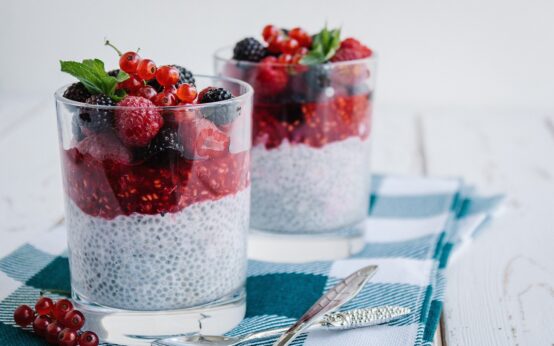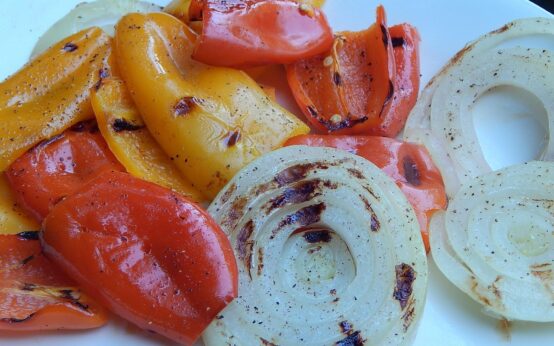Do you ever find yourself staring at a bowl of lettuce, feeling a little underwhelmed by your salad game? You’re not alone. Many people equate the idea of a healthy salad with a monotonous pile of greens that they force themselves to eat out of a sense of obligation rather than enjoyment. The good news is that making a healthy salad that actually tastes good is entirely possible. With a few tips and tricks, you can transform those leafy greens into something so delightful you’ll be looking forward to your next bite!
Understanding the Basics of a Healthy Salad
Before diving into ingredient selection and flavor combinations, it’s essential to understand what makes a salad healthy. A nutritious salad primarily features a variety of vegetables, but you can also incorporate other components to boost its nutritional value.
The Foundation: Greens
The base of your salad sets the stage for everything else. While iceberg lettuce is common, it’s not the most nutritious option. Consider using darker, leafy greens like spinach, kale, or arugula, which are packed with vitamins and antioxidants. Each type of green adds a unique flavor and texture, so feel free to mix and match.
Essential Nutrients
A healthy salad should be a balanced meal, providing good sources of protein, healthy fats, and carbohydrates. Here’s a quick rundown of what to include:
- Protein: Consider adding grilled chicken, tofu, beans, lentils, or boiled eggs. These options help keep you full and provide essential amino acids.
- Healthy Fats: Avocado, nuts, seeds, and olive oil are excellent choices. They add creaminess or crunch and aid in the absorption of fat-soluble vitamins.
- Carbohydrates: Whole grains like quinoa, farro, or brown rice give your salad substance and energy.
Combining these elements can turn a simple salad into a satisfying meal that supports your health goals.
Building Flavor Through Texture and Taste
A great salad is a symphony of flavors and textures that keeps every bite exciting. Rather than just focusing on what’s healthy, consider the sensory experience of eating.
Crisp, Crunchy, and Creamy
Textures play a significant role in making a salad enjoyable. Think about the pleasure of biting into a crisp cucumber slice or the crunch of a roasted nut. Here are some ideas:
- Crisp: Include fresh vegetables like bell peppers, carrots, or snap peas.
- Crunchy: Nuts, seeds, or crispy roasted chickpeas can add a satisfying crunch.
- Creamy: Avocado, a yogurt-based dressing, or cheese like goat or feta can provide a creamy contrast.
Sweet, Sour, Bitter, and Salty
Balancing the flavors in your salad is crucial. Aim to incorporate elements that hit all the major taste profiles:
- Sweet: Fruits like berries, orange segments, or dried cranberries can add natural sweetness.
- Sour: A squeeze of lemon or a dash of vinegar brightens up the flavors.
- Bitter: Greens like arugula or radicchio introduce a subtle bitterness that can be quite appetizing.
- Salty: Cheese, olives, or a pinch of salt can enhance and bring together all the other flavors.

Choosing Ingredients for Maximum Benefit
Selecting high-quality ingredients will elevate both the taste and the nutritional value of your salad. Consider seasonal produce, which often boasts the best flavor and nutrients.
Veggies Galore
Aim to incorporate a variety of vegetables to keep things interesting and manifold in health benefits. Here are some nutrient-rich options:
| Vegetable | Flavor Profile | Nutritional Benefits |
|---|---|---|
| Spinach | Mild, slightly sweet | High in iron and vitamin K |
| Bell Peppers | Sweet, crunchy | Rich in vitamin C and antioxidants |
| Carrots | Sweet, earthy | Good source of beta-carotene and vitamin A |
| Cucumbers | Mild, refreshing | Hydrating and low in calories |
| Tomatoes | Juicy, acidic | High in potassium, vitamins C and K |
Adding Protein and Grains
Proteins and grains turn a regular salad into a complete meal. Experiment with different preparations and flavors:
- Grilled Chicken: A classic option, seasoned with herbs or spices of your choice.
- Tofu or Tempeh: Marinate or saute for added flavor, excellent for vegetarian or vegan diets.
- Quinoa: A pseudo-grain that’s rich in protein and gluten-free, often cooked and cooled before adding.
Dressing to Impress
The dressing can either make or break your salad. Homemade dressings are often healthier and more customizable. Here are a few ideas:
- Vinaigrette: Mix olive oil, vinegar, mustard, and honey for a classic option.
- Creamy Avocado: Blend avocado with lime juice, Greek yogurt, and cilantro.
- Tahini-Lemon: Combine tahini, lemon juice, garlic, and a little water to thin.
Remember, a little goes a long way. Dress your salad lightly to enhance its flavors without overpowering them.
Meal Prepping and Storage Tips
If you’re looking to incorporate salads into your routine consistently, meal prepping can be a game-changer. This strategy ensures you always have a nutritious meal ready without scrambling for ingredients.
Storing Salad Components
Keep your ingredients fresh and crisp by storing them properly:
- Greens: Wash and dry thoroughly, then store in the fridge in a sealed container with a paper towel to absorb moisture.
- Proteins: Prepare in bulk and store in airtight containers for quick access.
- Dressing: Store separately and add right before eating to avoid soggy greens.
Assembling Ahead
Consider layering your salad components in a jar or container if prepping in advance. Place heavier items like grains or proteins at the bottom and lighter, more delicate items like greens at the top. This method keeps everything fresh until you’re ready to mix and enjoy.

Overcoming Common Salad Struggles
Maybe you’ve tried making salads before but found them lacking in some way. Let’s address a couple of common issues and their solutions.
Bland Flavor
If your salad tastes plain, it might be because of a lack of seasoning. Adding a pinch of salt and pepper, or even a sprinkle of herbs, can instantly enhance the flavors. Don’t shy away from using spices like cumin, coriander, or chili flakes for an extra dimension.
Texture Imbalance
No one enjoys a bowl of mushy greens. Counteract softness by including ingredients with diverse textures as mentioned earlier. A handful of nuts or seeds can add much-needed crunch.
Bringing It All Together with a Delicious Recipe
To put theory into practice, let’s make a sample salad that’s both healthy and delightful. Feel free to modify it based on your preferences and what you have on hand.
Recipe: Nutty Quinoa Super Salad
Ingredients:
- 2 cups of mixed greens (spinach and arugula)
- 1 cup cooked quinoa
- ½ cup cherry tomatoes, halved
- 1 cucumber, sliced
- ½ red bell pepper, chopped
- 1 avocado, diced
- ¼ cup feta cheese, crumbled
- ¼ cup almonds, toasted
- Optional: sliced grilled chicken or tofu for extra protein
Dressing:
- 3 tablespoons olive oil
- 1 tablespoon balsamic vinegar
- 1 teaspoon Dijon mustard
- 1 teaspoon honey
- Salt and pepper to taste
Instructions:
- In a large bowl, toss together the mixed greens, cooked quinoa, tomatoes, cucumber, bell pepper, avocado, and feta cheese.
- In a small bowl or jar, whisk together olive oil, balsamic vinegar, Dijon mustard, honey, salt, and pepper to make the dressing.
- Drizzle the dressing over the salad and toss gently to combine.
- Sprinkle the toasted almonds on top for a nutty crunch.
- Add optional protein if desired, and dig in to enjoy every bite of this nutritious creation!
Making a healthy salad that tastes good doesn’t have to be a daunting task. By being thoughtful about your ingredient selections and embracing a variety of flavors and textures, you can turn a simple bowl of greens into a joy-filled meal. Whether you’re meal prepping for the week or throwing together a quick dinner, these tips are here to guide you on your journey to salad satisfaction. Get ready to create bowls that are not only packed with nutrients but also bursting with deliciousness!


 Tips For Mindful Eating: A Guide To Healthy Relationships With Food
Tips For Mindful Eating: A Guide To Healthy Relationships With Food  How To Create A Balanced Meal Plan For Optimal Health
How To Create A Balanced Meal Plan For Optimal Health  Top 5 Superfoods To Include In Your Diet
Top 5 Superfoods To Include In Your Diet  How To Choose The Right Vitamins And Supplements
How To Choose The Right Vitamins And Supplements  Effective Ways To Prevent Chronic Illness Through Diet
Effective Ways To Prevent Chronic Illness Through Diet  The Best Supplements For Healthy Aging
The Best Supplements For Healthy Aging  How To Create A Skincare Routine For Oily Skin
How To Create A Skincare Routine For Oily Skin  The Best Ingredients For Anti-Aging Skincare
The Best Ingredients For Anti-Aging Skincare  10 Skincare Myths That Are Wrecking Your Glow—Debunked by Experts
10 Skincare Myths That Are Wrecking Your Glow—Debunked by Experts  Natural Skincare 101: Everything you Need to Know
Natural Skincare 101: Everything you Need to Know  The Ultimate Guide To Sunscreen: What You Need To Know
The Ultimate Guide To Sunscreen: What You Need To Know  Best Anti-Acne Products: A Comprehensive Buyers Guide
Best Anti-Acne Products: A Comprehensive Buyers Guide